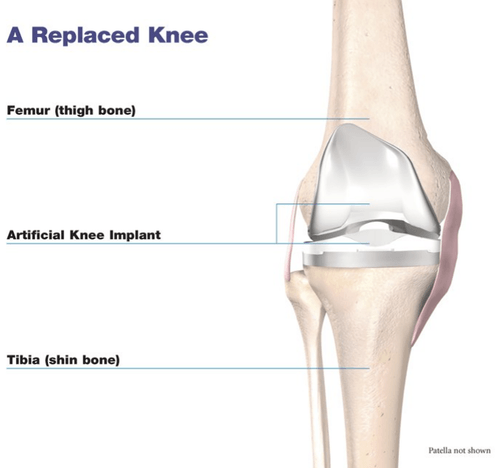Total knee replacement
What is a Total Knee Replacement?

In a total knee replacement, the arthritic surfaces of the femur (thigh bone), tibia (shin bone), and patella (knee cap, not shown here) are resurfaced with metal and high-strength plastic. Illustration of the Triathlon total knee replacement, courtesy of Stryker (www.stryker.com).
Total knee replacement is a surgical treatment for advanced knee arthritis in which the damaged, arthritic portions of the joint are replaced with metal and high strength plastic (called polyethylene). A common misconception is the notion that the entire inside of the knee is removed and replaced with a single-component prosthetic knee, similar to a prosthetic limb. In reality total knee replacement should be thought of more as a resurfacing procedure, in which the damaged joint surfaces are replaced using four separate thin pieces of metal and plastic (see figure).
Who should consider having a knee replacement?
Knee replacement is reserved for people with advanced knee arthritis that fails to improve with non-surgical treatments. This includes those with osteoarthritis, post-traumatic arthritis, and rheumatoid arthritis among others. In these cases, knee replacement surgery often enables people to resume many of their activities and function with significantly less pain.
What is the recovery like?
Knee replacement surgery normally includes a brief hospital stay. Physical therapy begins the day of surgery or the following morning. Walking with the aid of a walker and the help of the therapist and hospital staff is encouraged. Most people are ready to go home after 2-3 nights in the hospital. It is helpful to have someone available to provide assistance for the first several days thereafter. If additional help is needed at home, the assistance of a home-health care provider can usually be arranged.
